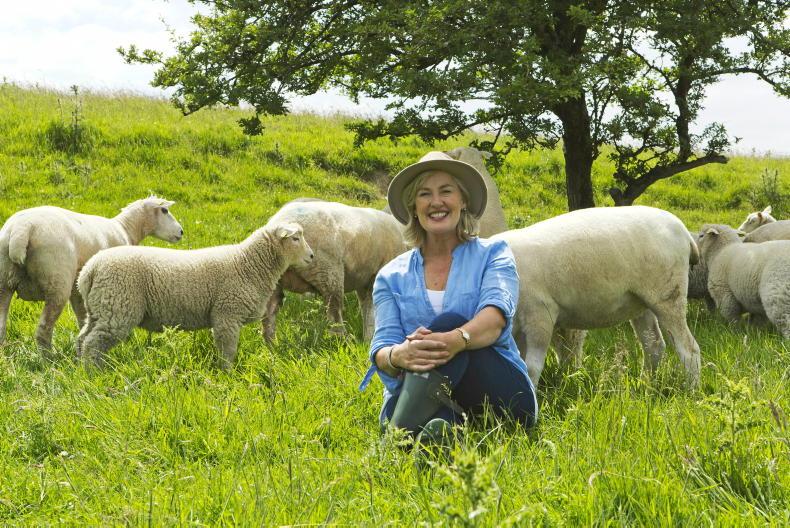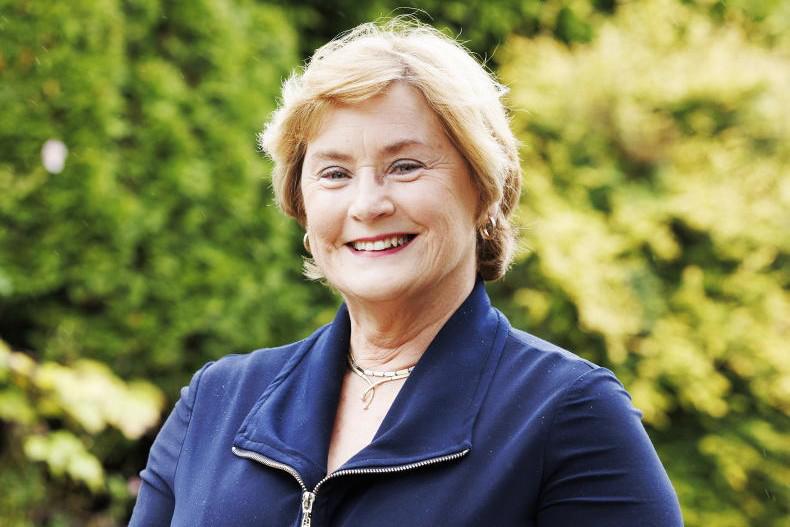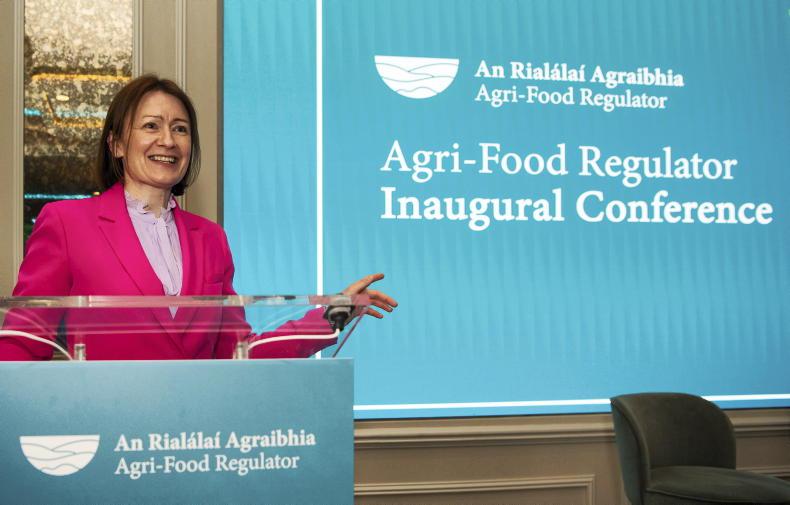The final tally was 27 to 1 between Kerry and Tipperary, with Kerry for the win.
A nil-all draw was recorded between Kilkenny and Cork. The competition was not of a GAA nature, but a young Raine McKeever counting the flocks of sheep between our house in Kilkenny and Dingle, Co Kerry, as we made that trip south this week.
On a long car journey, we have become proficient in using our imagination to pass the time. Of late, the McKeever version of “Animal Guess Who” – “Does it have four legs?”; “Does it have fur?”; “Does it live on the farm?” – had been the game of choice, but it appears that this too, has run its course.
The counting sheep car game was inspired by the fact that I have read and heard quite a lot about sheep this week
To support this assertion, I successfully guessed “unicorn” quite recently, with small daughter seeing no issue with this choice of animal!
The counting sheep car game was inspired by the fact that I have read and heard quite a lot about sheep this week. Coupled with Sophie Finn's interview with textile artist Caóilfionn Murphy O’Hanlon who uses wool as her medium, this week’s cover feature is with sheep farmer Blátnaid Gallagher.
the Galway is the only listed native Irish sheep breed
Blátnaid is forthright with her views on the industry, but these are backed by action. She has utilised the opportunity provided by her master’s in Agricultural Innovation & Entrepreneurship from National University of Galway (NUIG) to identify a problem in the sector, which for her was Irish wool, and to also do something about it with the Galway Sheep Breeders Association.

Blátnaid keeps Galway sheep on her farm in Aughrim, Co Galway. \ David Ruffles
She references that the Galway is the only listed native Irish sheep breed (with a recorded flock book).
This reminded me about a spat I saw on Twitter recently. Said spat arose when RTÉ reported that the National Parks and Wildlife Service (NPWS) were investing in the revitalisation of a native breed, thought to be extinct since 1995, with the Cladoir Sheep Conservation Project. The Cladoir was kept predominately for its wool, which, according to the Irish Native Rare Breed Society (INRBS), was “fine and suitable for spinning and weaving”.
One of the arguments supporting sheep production is its lower carbon footprint
The spat hinged around the fact that the Irish Wildlife Trust questioned why “Given the scale of the biodiversity crisis and the inaction of the NPWS on so many fronts”, resources had been devoted to his project. This view was not shared by all.

Caóilfíonn Murphy O'Hanlon with her work in her native Armagh.
One of the arguments supporting sheep production is its lower carbon footprint. It would be ideal if the meat and wool from the same sheep could both be valuable, but this is currently not the case. As pointed out by both Blatnáid and Caóilfionn, we are importing wool, predominately Merino. With Merino sheep, traditionally, the valuable product has been its wool and the meat; the byproduct. The new Bord Bia carbon foot-printing of sheep flocks was discussed on Countrywide last Saturday with Teagasc researcher Sarah Woodmartin outlining how on a per-kg of output basis, sheep produce less CO2 than cattle. This is a positive message for the sector.
The food was packed in 100% pure wool liners
My last sheep bit. A few weeks ago, we got a box of potato products from mash direct. As delicious and convenient as spuds in a variety of formats are, it was the insulation that really caught my eye. The food was packed in 100% pure wool liners. The company Woolcool (great name) also challenge you to use your imagination in how you will reuse the liner. And hey, even if you can’t come up with something imaginative, it is compostable. I think that is Raine and I sorted for a game for the way home from Dingle.
Read more
Fly the flag, Pride matters, love wins
Comment: When self-interest trumps the masses, everyone suffers
The final tally was 27 to 1 between Kerry and Tipperary, with Kerry for the win.
A nil-all draw was recorded between Kilkenny and Cork. The competition was not of a GAA nature, but a young Raine McKeever counting the flocks of sheep between our house in Kilkenny and Dingle, Co Kerry, as we made that trip south this week.
On a long car journey, we have become proficient in using our imagination to pass the time. Of late, the McKeever version of “Animal Guess Who” – “Does it have four legs?”; “Does it have fur?”; “Does it live on the farm?” – had been the game of choice, but it appears that this too, has run its course.
The counting sheep car game was inspired by the fact that I have read and heard quite a lot about sheep this week
To support this assertion, I successfully guessed “unicorn” quite recently, with small daughter seeing no issue with this choice of animal!
The counting sheep car game was inspired by the fact that I have read and heard quite a lot about sheep this week. Coupled with Sophie Finn's interview with textile artist Caóilfionn Murphy O’Hanlon who uses wool as her medium, this week’s cover feature is with sheep farmer Blátnaid Gallagher.
the Galway is the only listed native Irish sheep breed
Blátnaid is forthright with her views on the industry, but these are backed by action. She has utilised the opportunity provided by her master’s in Agricultural Innovation & Entrepreneurship from National University of Galway (NUIG) to identify a problem in the sector, which for her was Irish wool, and to also do something about it with the Galway Sheep Breeders Association.

Blátnaid keeps Galway sheep on her farm in Aughrim, Co Galway. \ David Ruffles
She references that the Galway is the only listed native Irish sheep breed (with a recorded flock book).
This reminded me about a spat I saw on Twitter recently. Said spat arose when RTÉ reported that the National Parks and Wildlife Service (NPWS) were investing in the revitalisation of a native breed, thought to be extinct since 1995, with the Cladoir Sheep Conservation Project. The Cladoir was kept predominately for its wool, which, according to the Irish Native Rare Breed Society (INRBS), was “fine and suitable for spinning and weaving”.
One of the arguments supporting sheep production is its lower carbon footprint
The spat hinged around the fact that the Irish Wildlife Trust questioned why “Given the scale of the biodiversity crisis and the inaction of the NPWS on so many fronts”, resources had been devoted to his project. This view was not shared by all.

Caóilfíonn Murphy O'Hanlon with her work in her native Armagh.
One of the arguments supporting sheep production is its lower carbon footprint. It would be ideal if the meat and wool from the same sheep could both be valuable, but this is currently not the case. As pointed out by both Blatnáid and Caóilfionn, we are importing wool, predominately Merino. With Merino sheep, traditionally, the valuable product has been its wool and the meat; the byproduct. The new Bord Bia carbon foot-printing of sheep flocks was discussed on Countrywide last Saturday with Teagasc researcher Sarah Woodmartin outlining how on a per-kg of output basis, sheep produce less CO2 than cattle. This is a positive message for the sector.
The food was packed in 100% pure wool liners
My last sheep bit. A few weeks ago, we got a box of potato products from mash direct. As delicious and convenient as spuds in a variety of formats are, it was the insulation that really caught my eye. The food was packed in 100% pure wool liners. The company Woolcool (great name) also challenge you to use your imagination in how you will reuse the liner. And hey, even if you can’t come up with something imaginative, it is compostable. I think that is Raine and I sorted for a game for the way home from Dingle.
Read more
Fly the flag, Pride matters, love wins
Comment: When self-interest trumps the masses, everyone suffers











SHARING OPTIONS